Atalanta and Paris Saint-Germain met in Lisbon to start this season’s UEFA Champions League quarterfinal. For the French side, this round has always been their nightmare as they have lost five quarterfinals since 2012. Their misfortune even can be traced to the previous millennium. It was back in 1995 when Les Parisiens last enjoyed a Champions League semifinal.
Their curse seemed to continue as Atalanta’s Mario Pašalić scored past former Real Madrid goalkeeper Keylor Navas in the first half. The scoreline stayed the same until Marquinhos equalised just 26 seconds before the normal time ended. Then, a miracle happened. Paris secured the win with a late goal from Eric Maxim Choupo-Moting in less than three minutes after the equaliser. Without further ado, this tactical analysis will inform you how the match unfolded.
Lineups
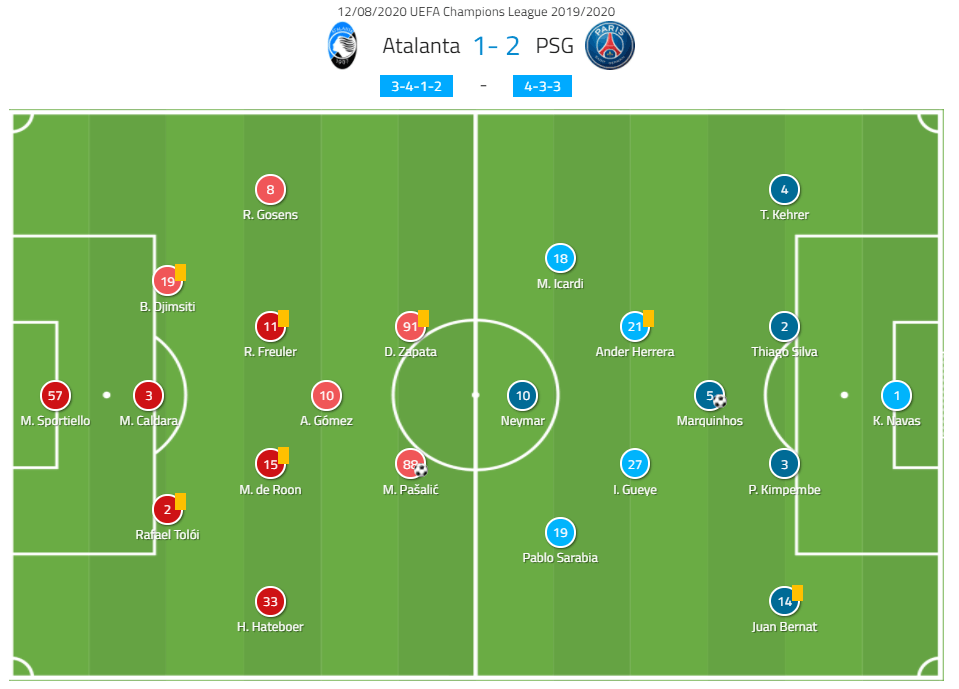
Gian Piero Gasperini opted for the usual 3–4–1–2 system for his team. The trio of Rafael Tolói, Mattia Caldara, and Berat Djimsiti started at the heart of the defence. Upfront, Alejandro ‘Papu’ Gómez provided the support in behind Pašalić and Duván Zapata. La Dea’s bench was filled with players like José Luis Palomino, Luis Muriel, Ruslan Malinovskyi, Jacopo Da Riva, and Timothy Castagne.
Oppositely, Thomas Tuchel went more adventurous with his squad choice. Shape-wise, he chose 4–3–3 as the go-to formation in this game. The most interesting part of this structure is the forward line. Targetman Mauro Icardi was chosen as a right-winger, while Pablo Sarabia started in the opposite flank. The central attacking role then was given to former Barcelona player, Neymar. In the dugout, players like Kylian Mbappé, Leandro Paredes, Sergio Rico, Choupo-Moting, and Julian Draxler had to participate as substitutes.
Atalanta’s defensive tactics
This part of the analysis will take a look at Atalanta’s tactics off the ball. Compared to most of the European clubs, Gli Orobici have a unique defensive system. That being their preference to defend in a man-oriented manner. It means that Atalanta’s players would happily break away from their initial positions to follow each of the opponents’ outfield players. This would allow Atalanta to engage in one-versus-one duels across the field.
La Dea would also combine this with a rather high pressing line. The objective behind that was to prevent their opponents from building their attacks smoothly from the back. This particular system was on a full display in this match.
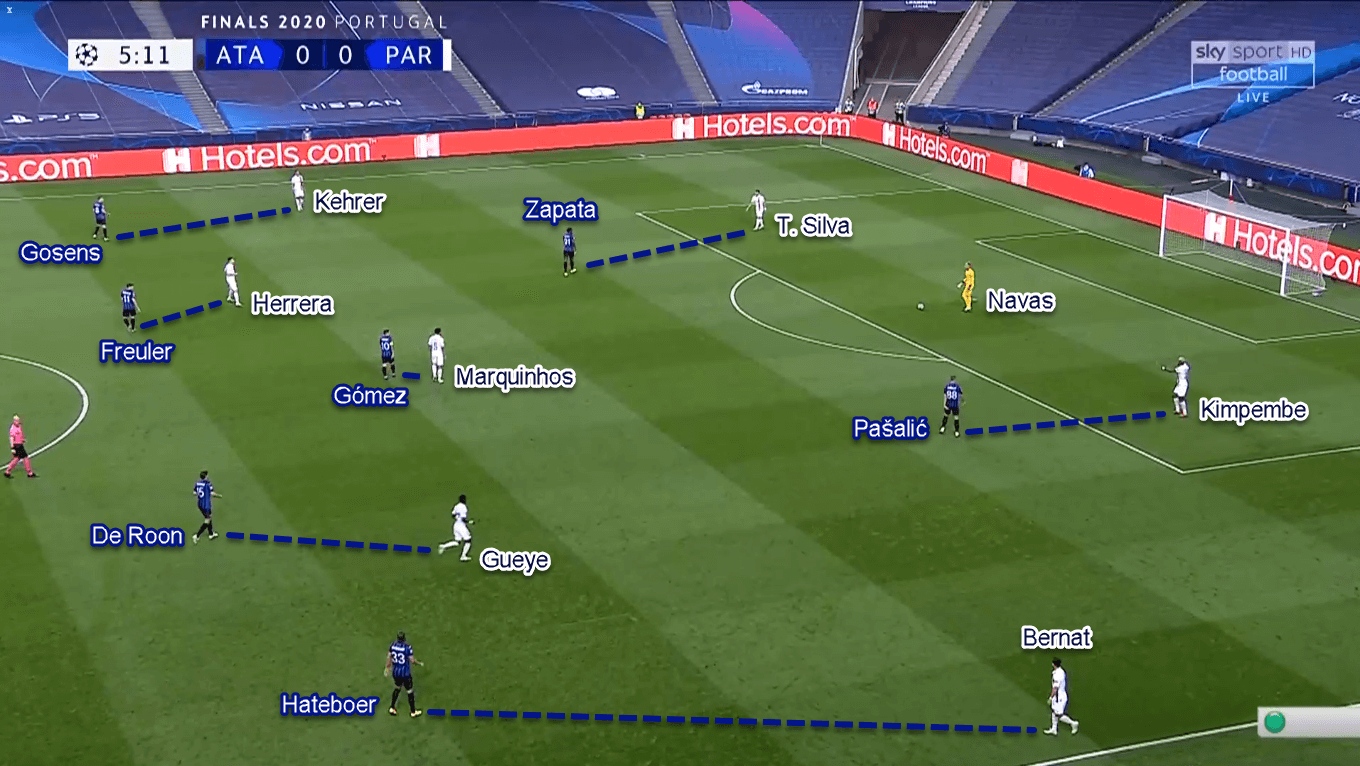
In their defensive tactics, both PSG centre-backs were occupied by Pašalić and Zapata. Behind them, Gómez was tasked to prevent Marquinhos to be accessed. Then, there were four players to cover PSG’s midfielders and full-backs. Those were Remo Freuler and Marten de Roon in the middle, as well as Robin Gosens and Hans Hateboer in their respective flanks. Les Parisiens’ attacking trident was also followed closely by each of Atalanta’s centre-backs in their respective area.
The man-oriented system then would only leave the goalkeeper Navas free. As he would have no nearby passing options available, Navas was forced to play long balls to the forwards. For a fact, the statistics showed Navas finished the game with 22 long passes.
The direct approach suited Atalanta heavily. Their sheer-sized centre-backs would gladly enjoy in aerial duels against PSG’s short attackers. The stats even showed that the defensive trio won at least 66.7% of their duels in the air.
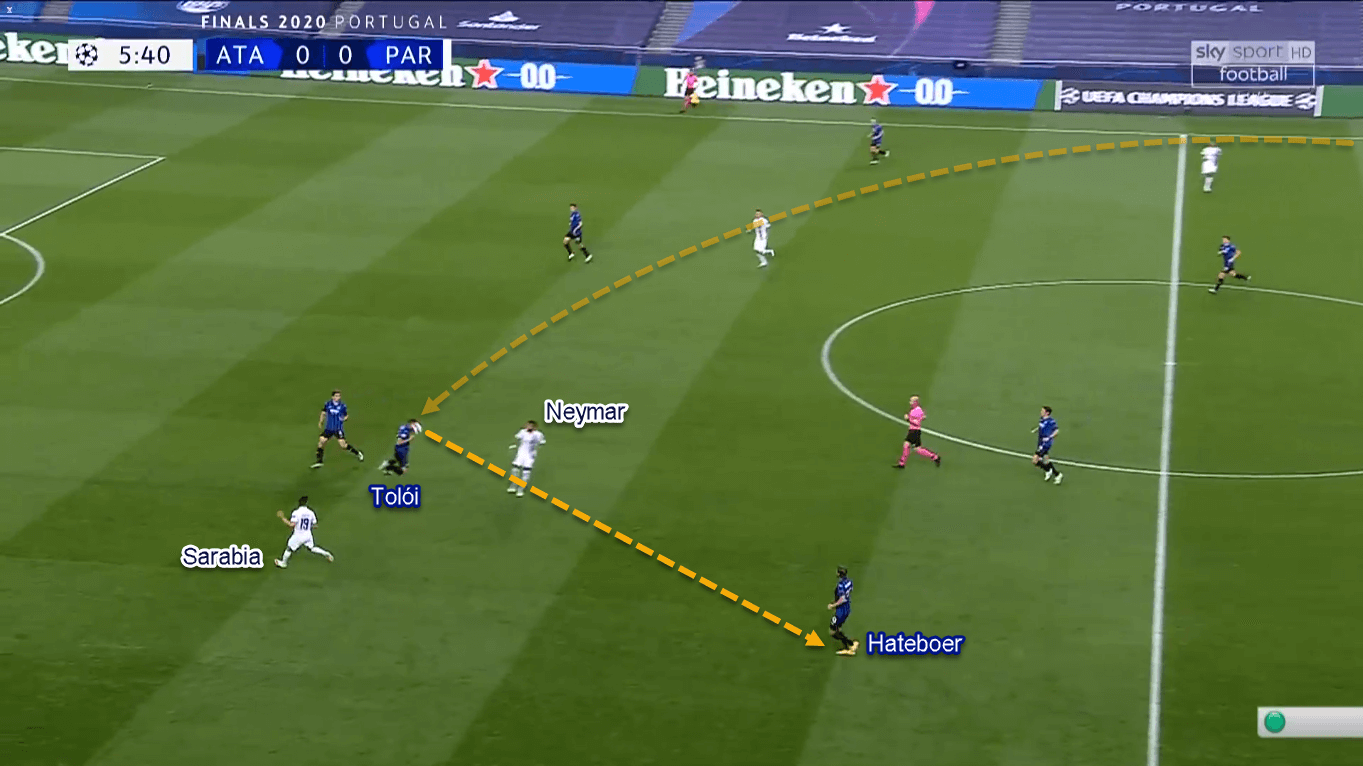
PSG exploit the issues (part one)
Atalanta’s man-oriented defensive tactics have some natural issues. Firstly, we’ll take a look at their defenders’ tendency to follow PSG’s attackers’ movements, even when they drop deeply. When the defenders do that, they would leave their backline and opened a space to be exploited. This could be even worse if multiple defenders leave their area simultaneously.
Next, by playing in a man-oriented manner, Atalanta’s defenders would refer their movements to the opponents’ attackers rather than to their defensive partners. This is quite dangerous because Atalanta could not play offside traps and sometimes had to defend huge space with only one defender. The lack of backline organisation was also one of the reasons behind Marquinhos’ goal.
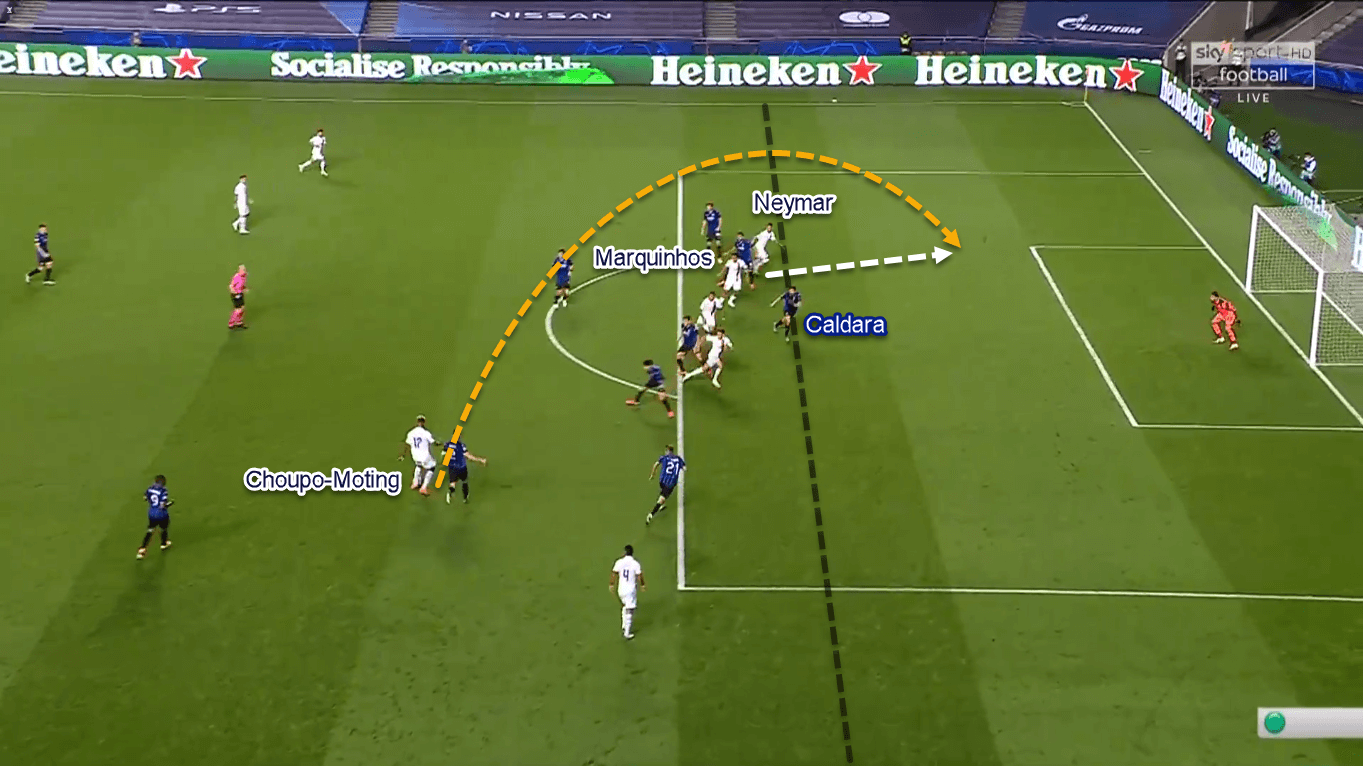
PSG tried to exploit this in various ways. First, Navas would try to send long balls to the forwards; mostly to Neymar. That’s because Neymar would drop in between the lines and pull Caldara with him. Sometimes he would also drift wide and takes Caldara further out of his position. The defenders could also be given the task to distribute the vertical passes at times.
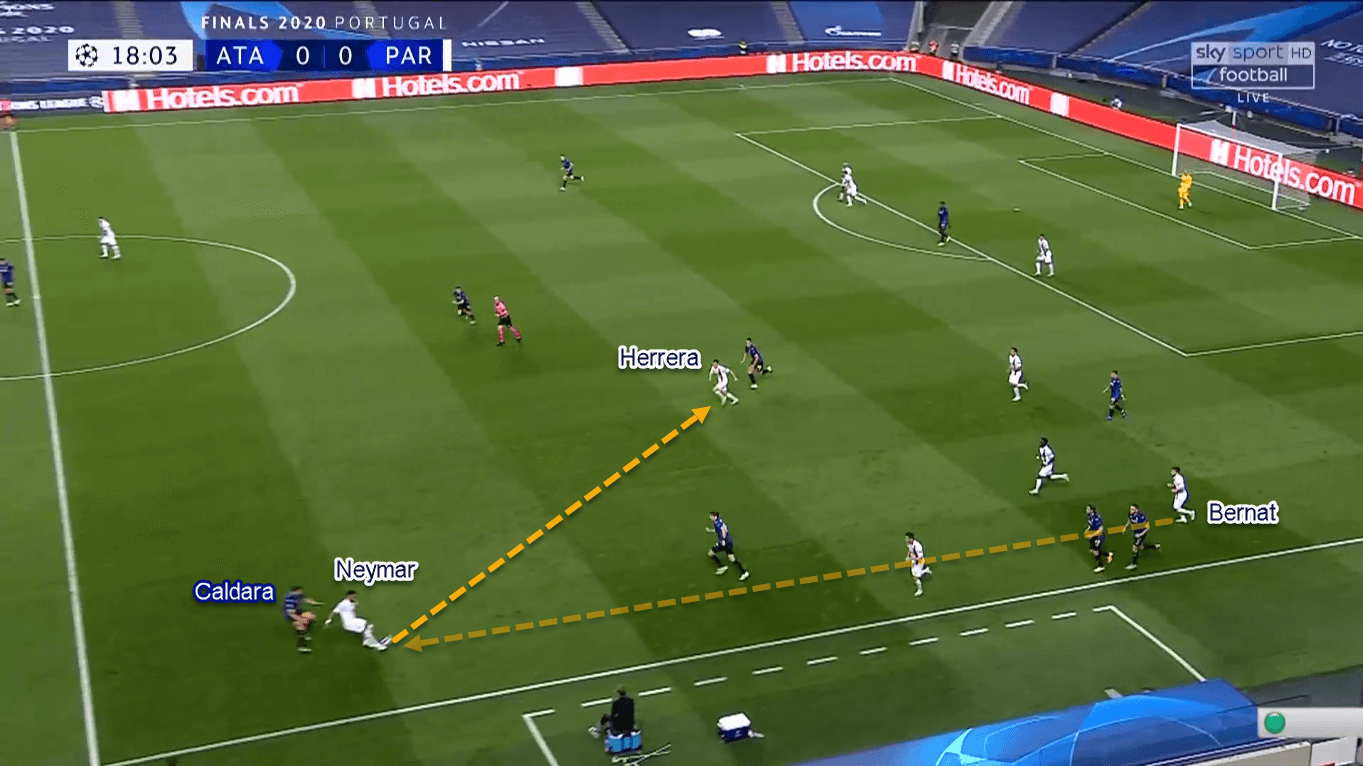
Then, the receiving attacker would lay the ball off to one of the deeper players. This was mostly either to Herrera or Idrissa Gana Gueye. However, Neymar could also receive the lay-off between the lines. That mostly happened when either Sarabia or Icardi won the physical ball for the Brazilian.
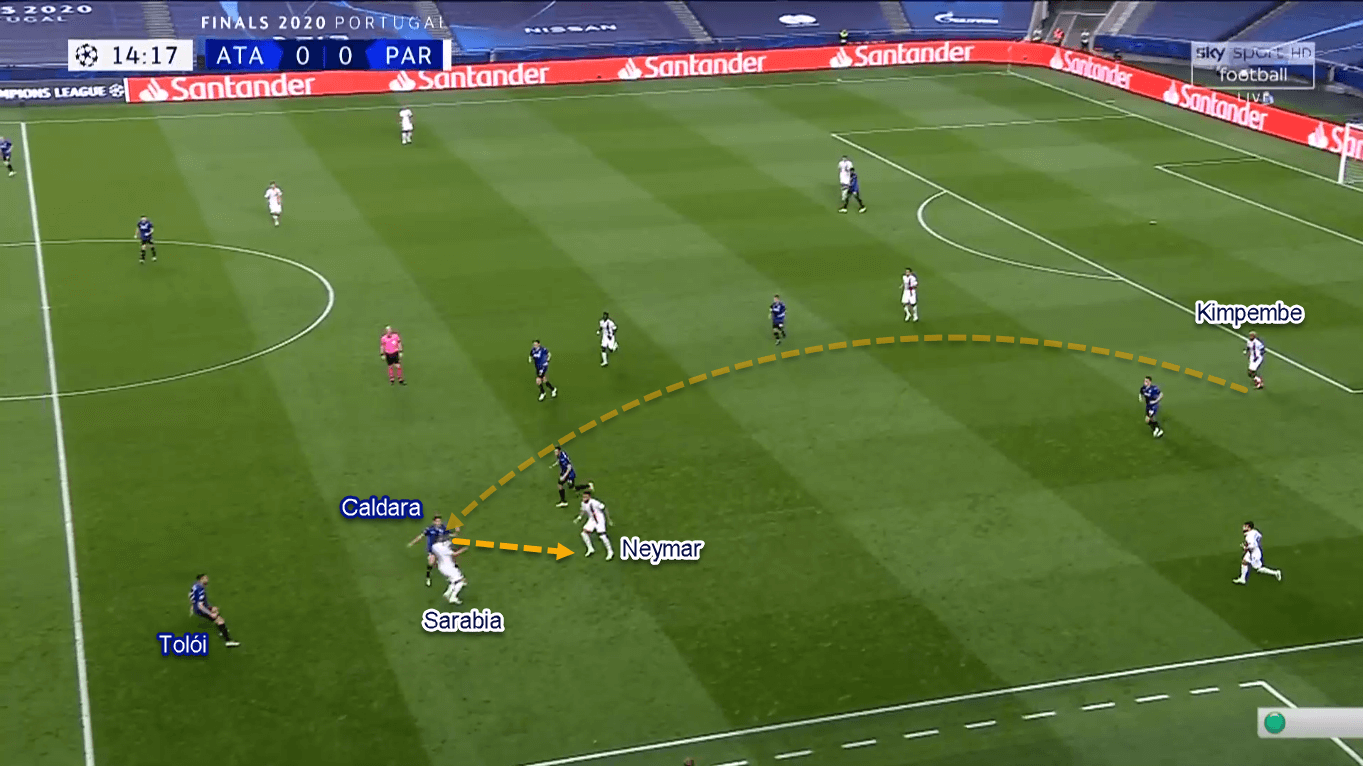
PSG exploit the issues (part two)
After that, PSG also have some alternatives on how to continue their attack. Primarily, they would allow Neymar to have the ball and create chaos by dribbling his way in; even through multiple opponents. If we look at the stats, Neymar ended the game with 15 (88.24%) successful dribbles from 17 attempts. It doesn’t stop there, though. The Brazilian got fouled as high as nine times due to his on-ball skillset; higher than all his teammates.
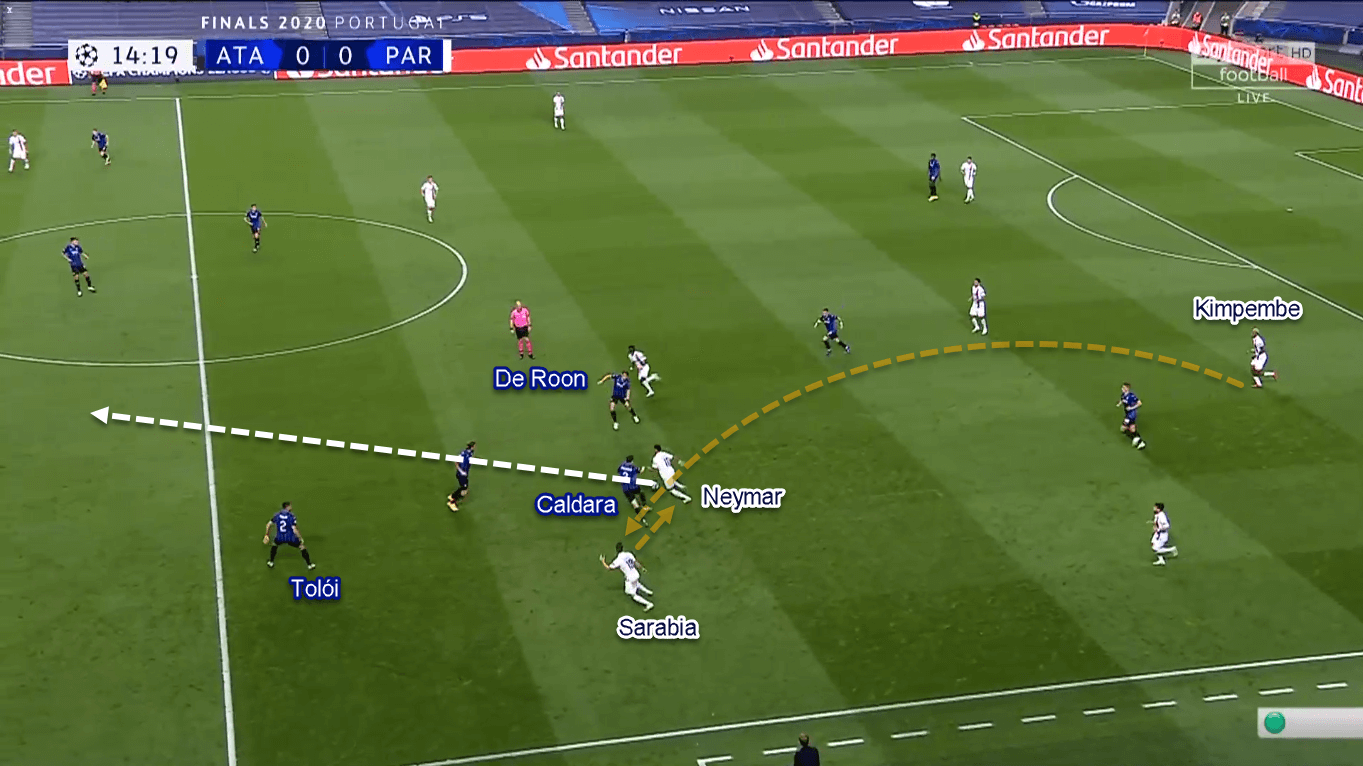
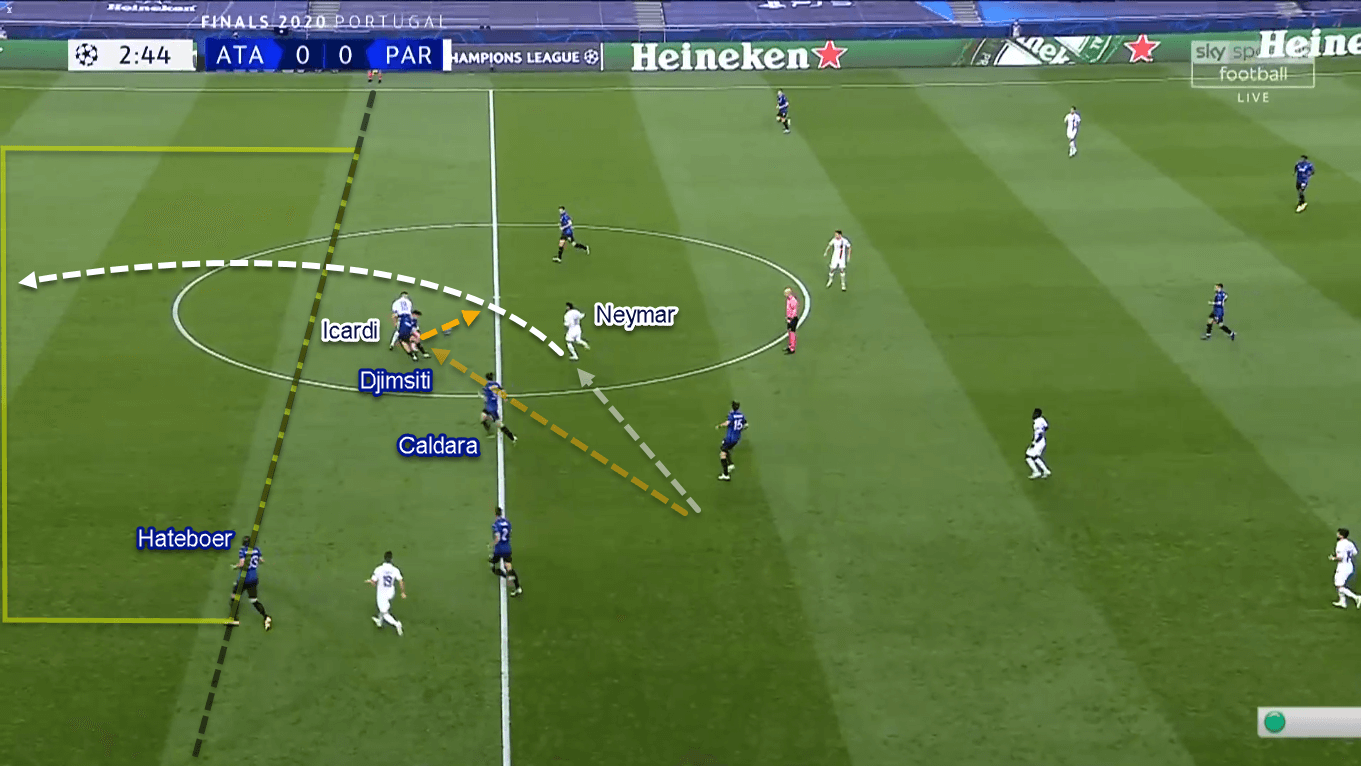
The second option was a bit more intricate. The receiver (mostly on the left flank) would drift wide and pull his marker away before combining with the deeper teammate. Then, that teammate would return the ball with a sharp pass in behind. With multiple defenders out of their positions, both Neymar and Sarabia could attack the space easily due to their exquisite pace.
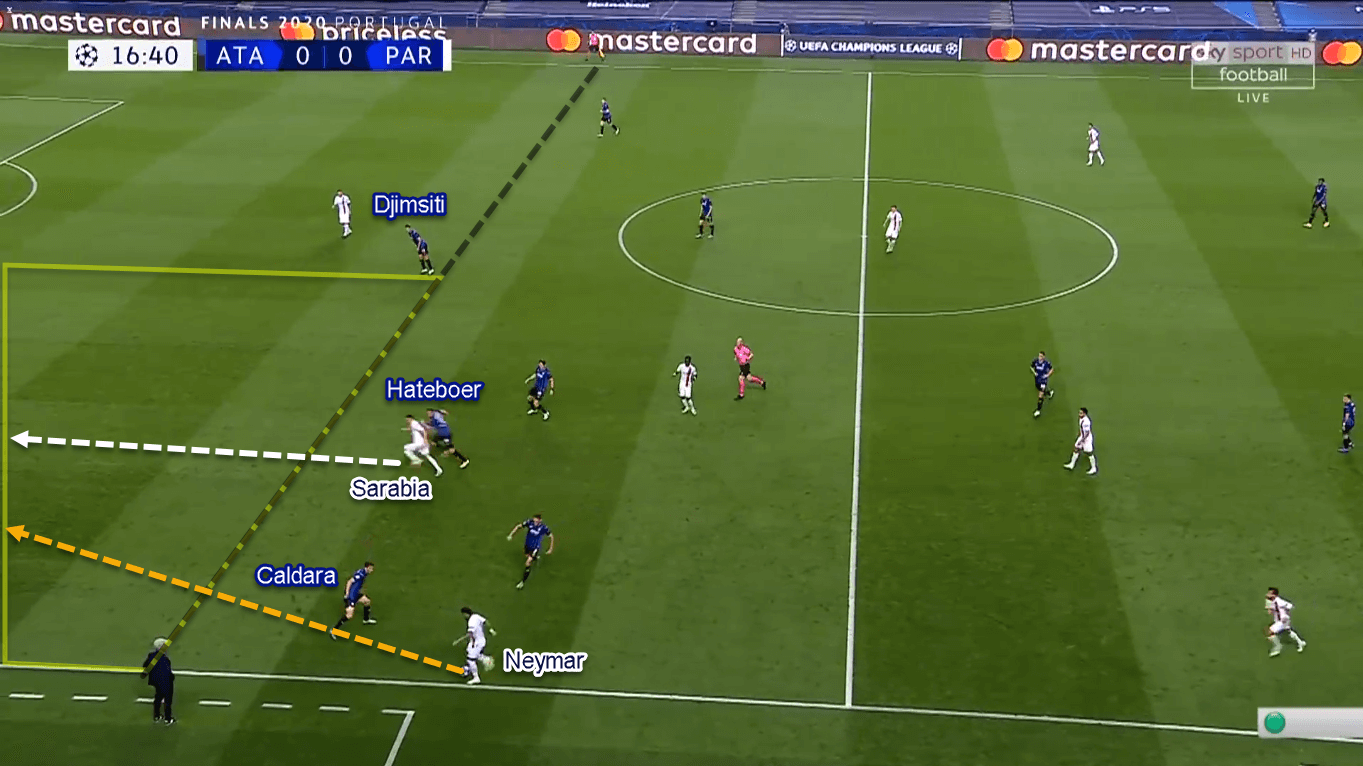
After receiving, the left-sided attacker would have the ball in the final third. Then, his next task was to provide a (ground) cross to the incoming Icardi. The Argentine would try to attack the ball with a diagonal run from the opposite flank. However, this approach didn’t bear as much success as the first option.
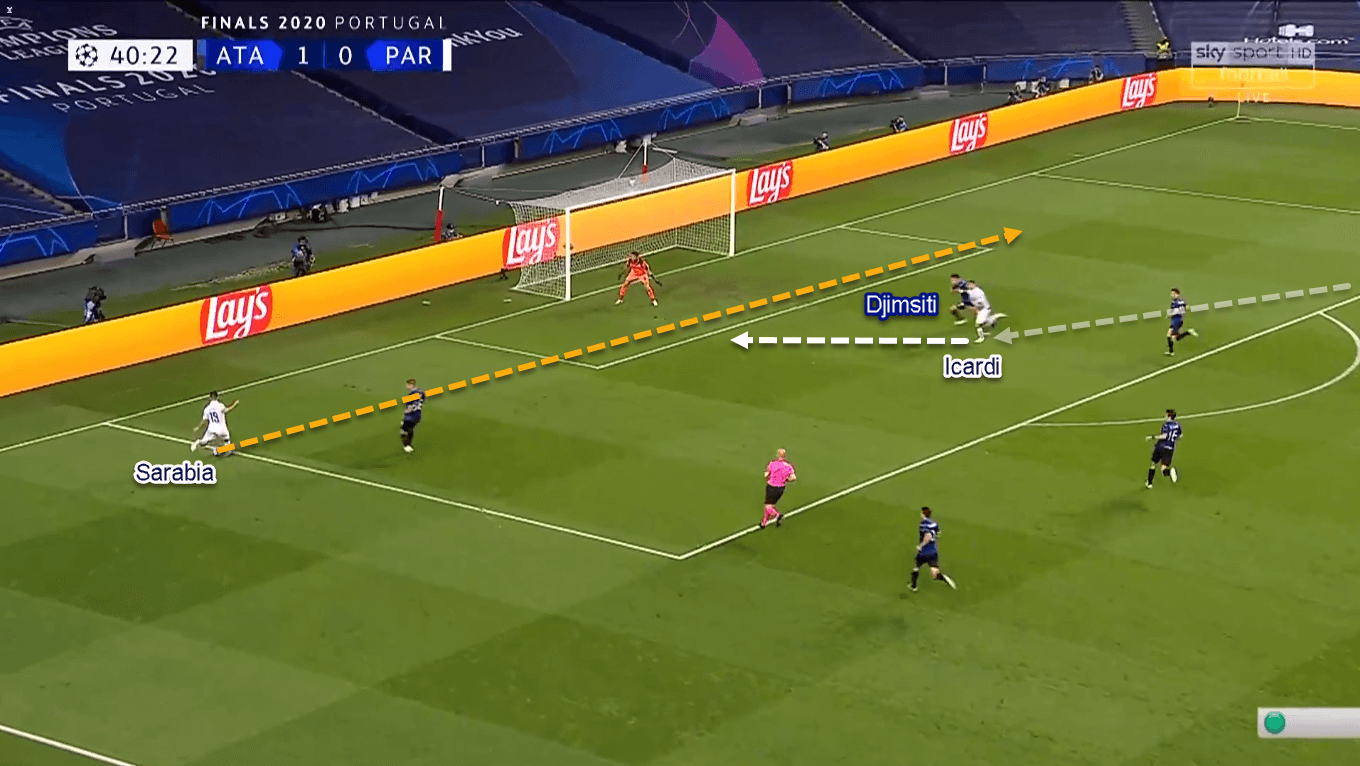
Atalanta can also defend deeper, but …
The Italian side could also be more conservative when they didn’t have the ball. They did that by dropping to a deeper 5–2–3. In that structure, Atalanta would defend more zonally and protect the central spaces tighter. However, there is still an issue in this particular tactic.
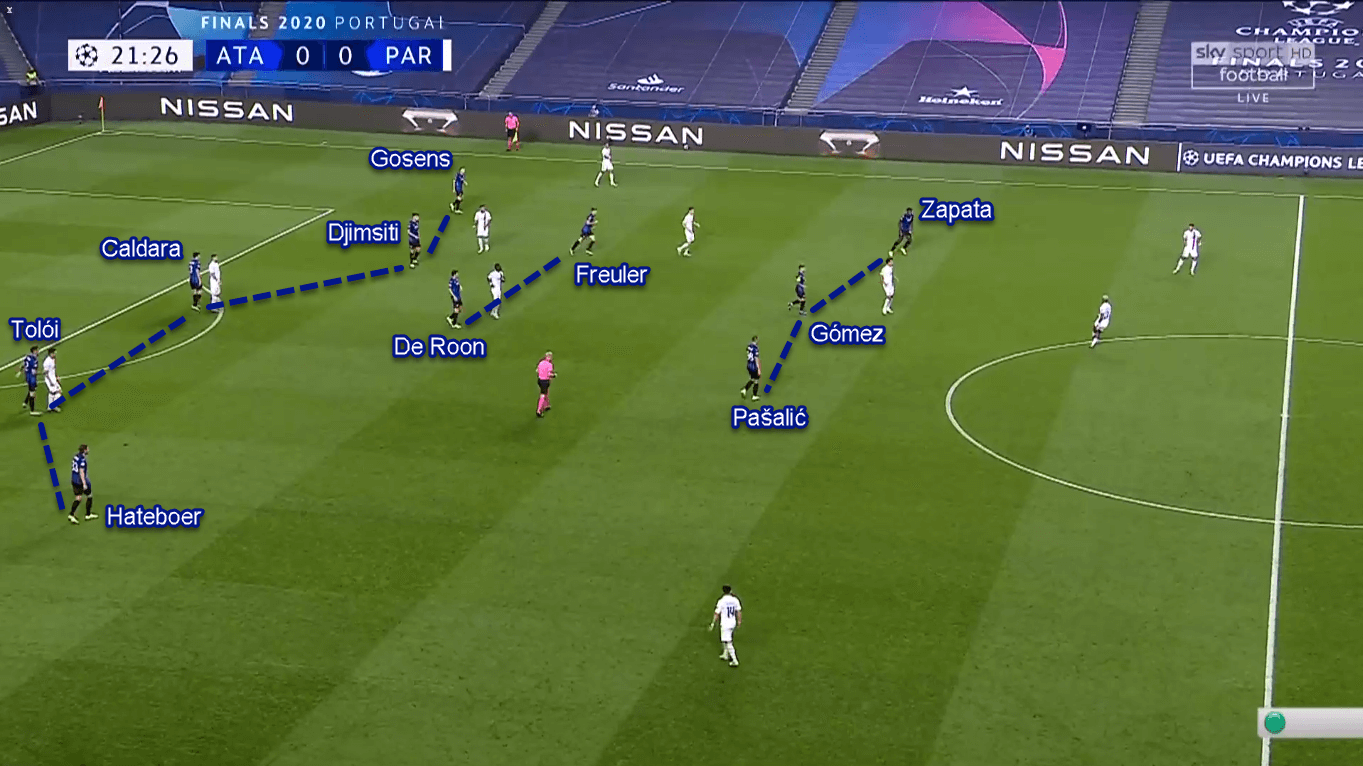
That issue was the huge space allowed in front of their wing-backs. This issue could be found more often in the far-side area. It means that if PSG try to attack positionally from the left — therefore having more players in that area — the area in front of Atalanta’s right wing-back would be completely open. The men in white then would try to find their far-side full-back through their centre-backs.
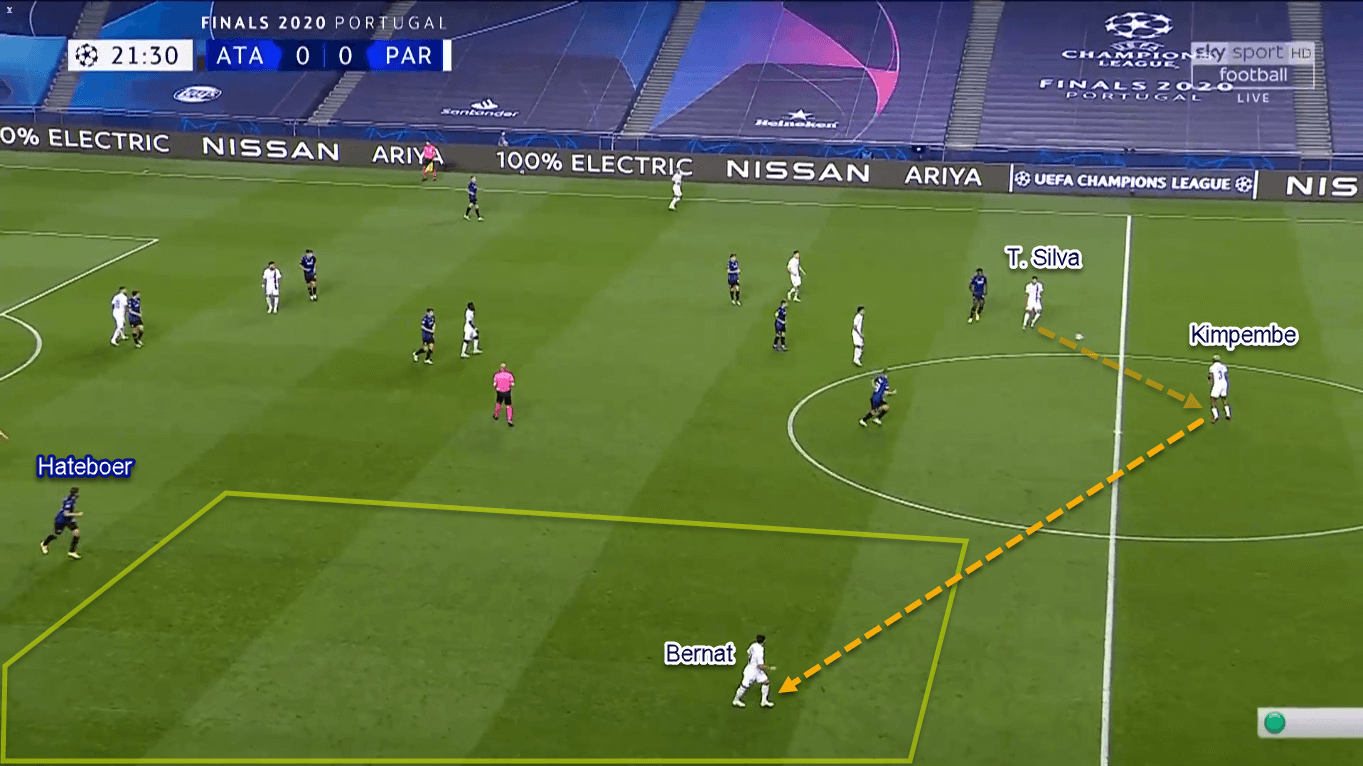
On some occasions, Atalanta could muffle this threat. That was by allowing their far-side wing-back to step up quickly and close the PSG’s receiver immediately. Sometimes it would also force the French side to play negatively due to the limited space.
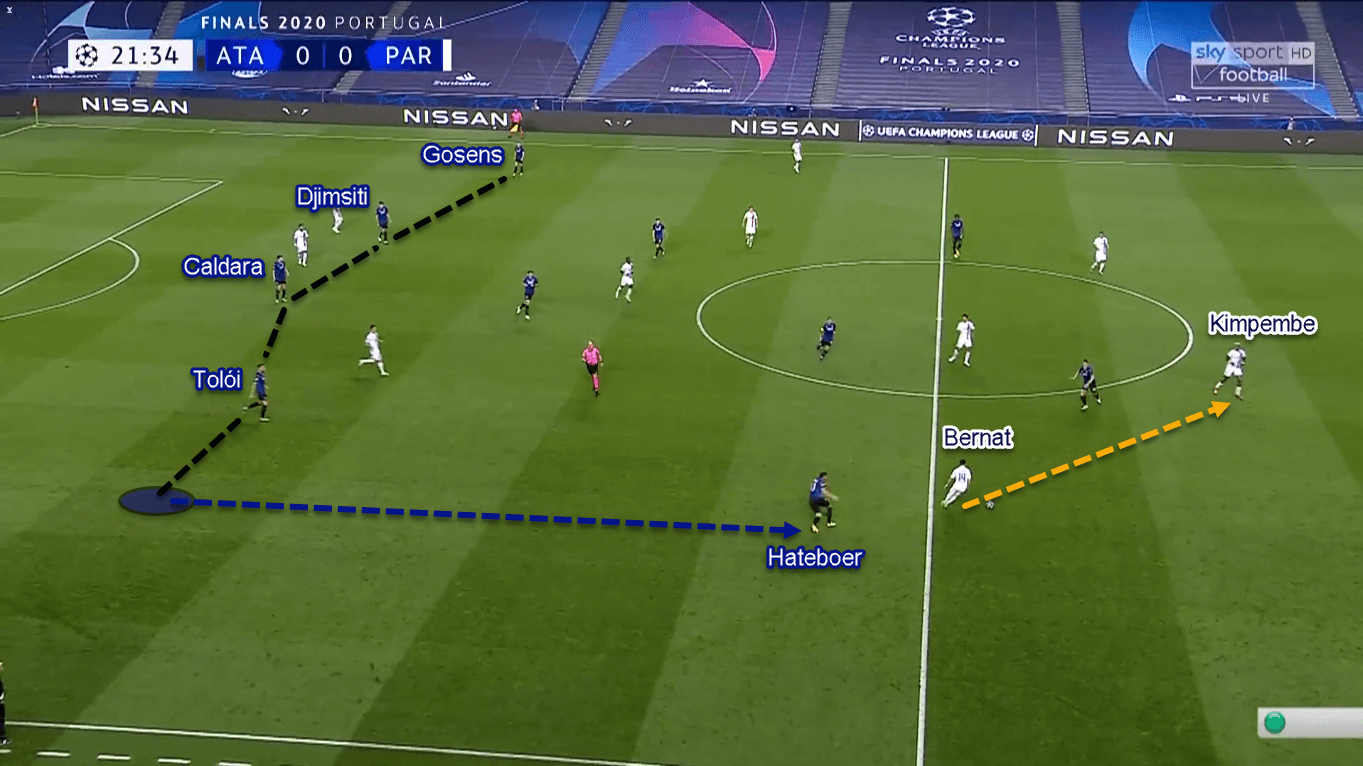
However, that was not the case in the second half. Tuchel found an interesting way to exploit the issue. That was to instruct one player (mostly the far-side winger) to drift a bit and stand in between Atalanta’s far-side wing-back and centre-back; sometimes even closer to the former. By doing so, the attacker would pin two defenders simultaneously and give his teammate more time to attack the space. This was also one of the reasons behind Marquinhos’ late equaliser.
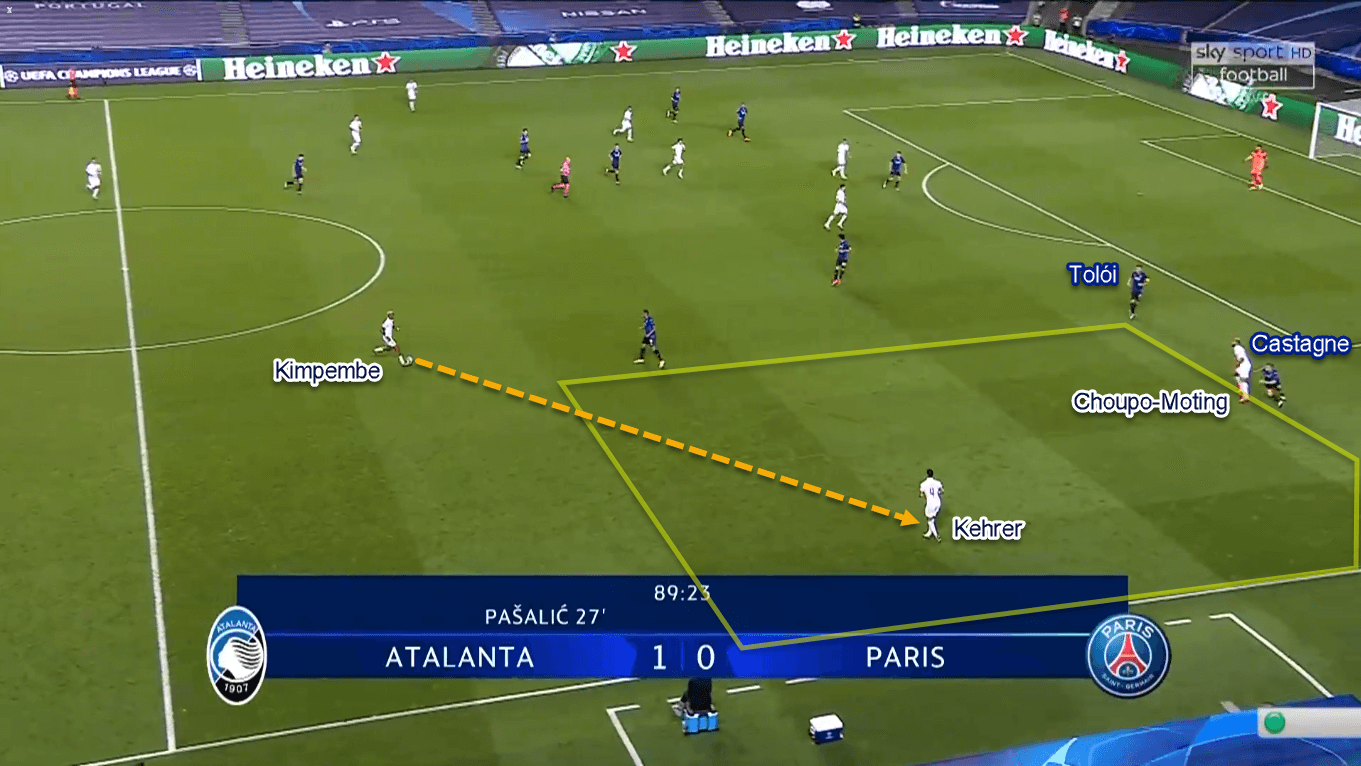
La Dea attack through the flanks
Despite finishing the game with lesser than 40% of possession, Atalanta did enjoy some moments when they launch positional attacks. When having the ball, La Dea would try to build their attacks through the flanks. The reason behind that was to minimise the risk if the ball gets stolen. If they lost the ball in wide areas, Atalanta could easily force to a throw-in. However, if they conceded possession centrally, it would be easier for PSG to capitalise on transitions.
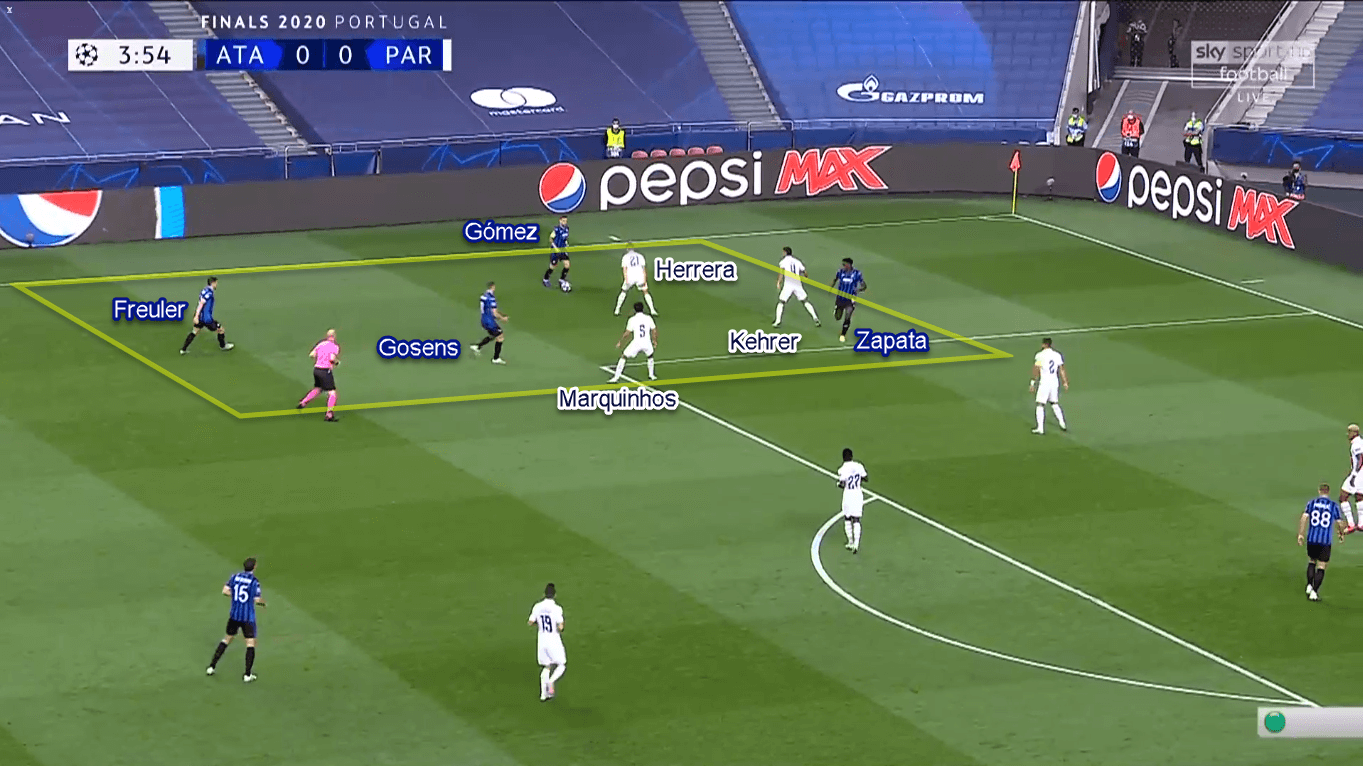
In their wing-heavy approach, Atalanta would allow up to four players to combine in the wide area. That consisted of a wing-back, a drifting attacking midfielder, a central midfielder, and a marauding centre-back. Those players then would combine and find one free player in space; mostly either the wing-back or the attacking midfielder.
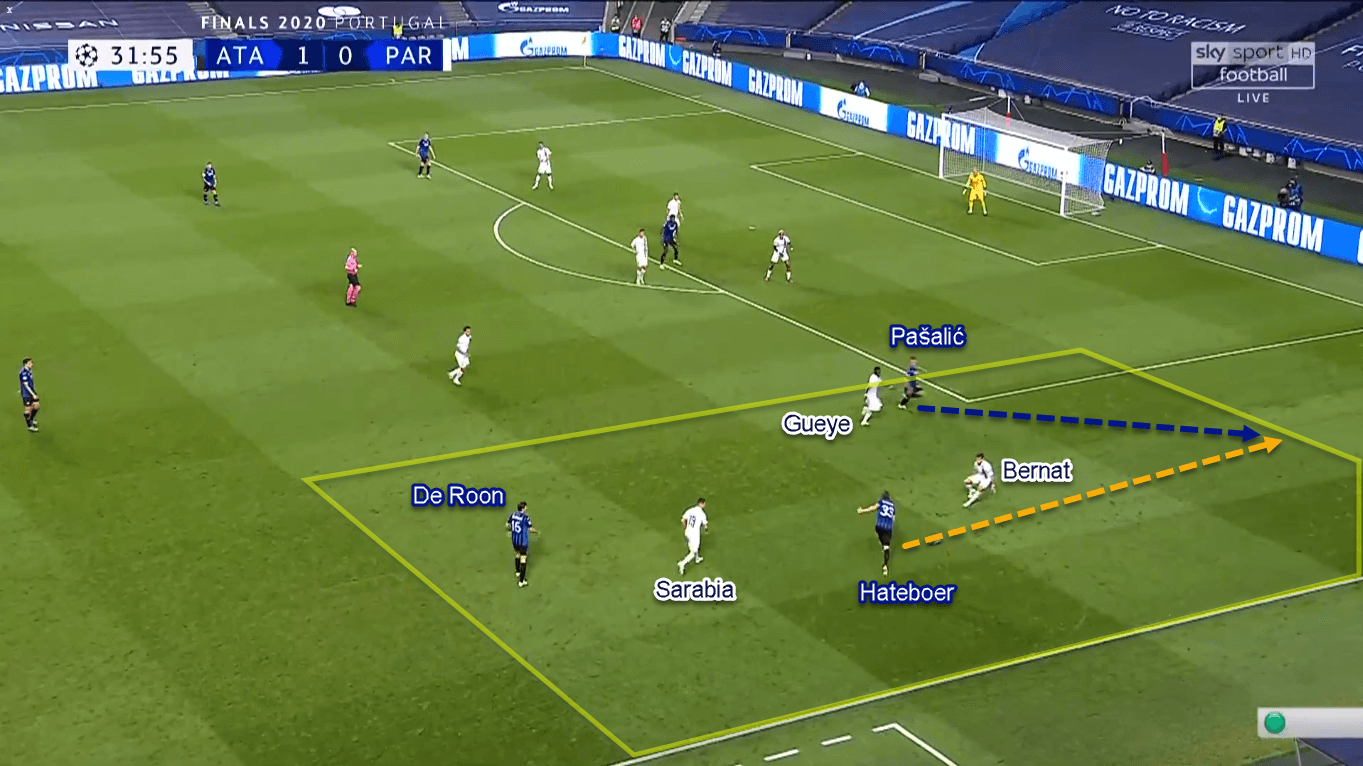
The free player then would be tasked to send crosses into the box. Inside the box, Atalanta would have up to three players. Those were the centre-forward, the remaining attacking midfielder, and the far-side wing-back. However, Atalanta were unable to utilise the flank as much as they expected.
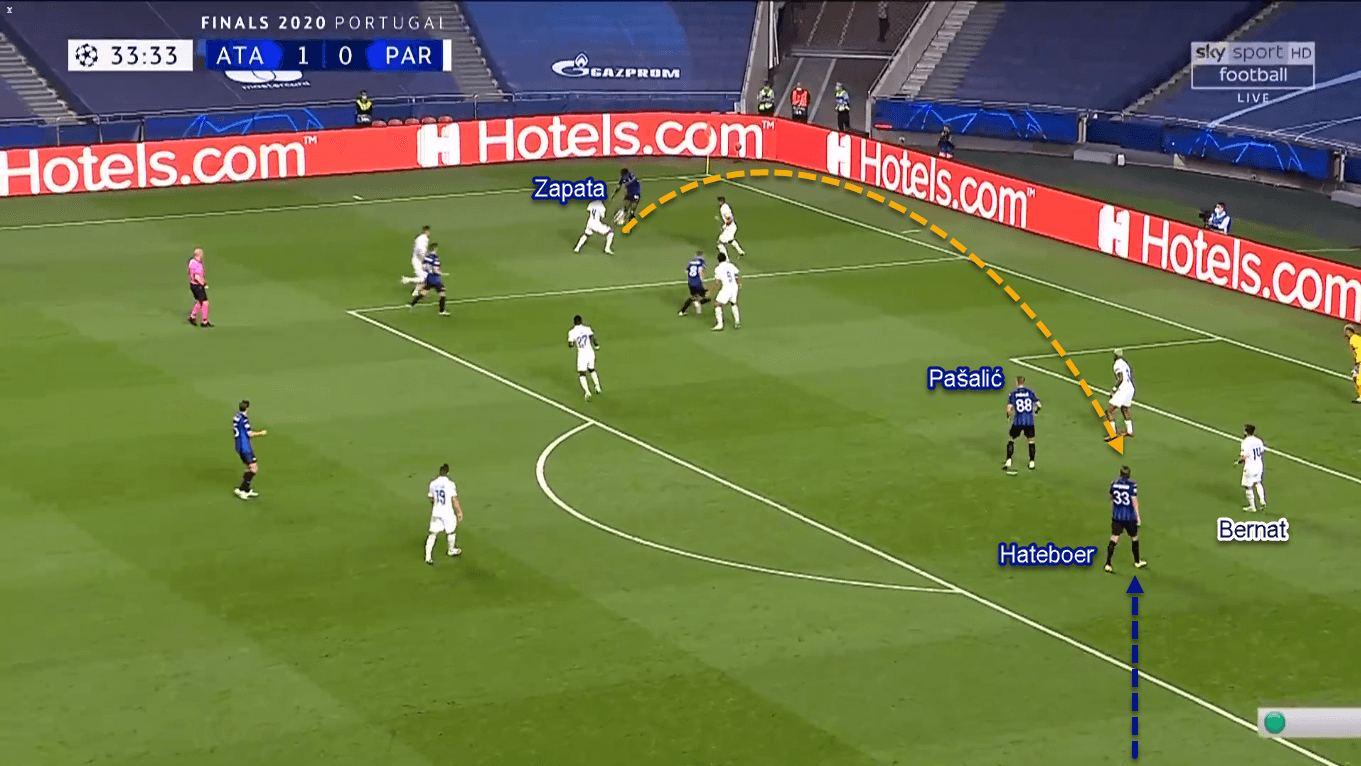
The reason behind that was PSG’s effective way to nullify the wing plays. To do so, Tuchel instructed up to five players to match — even to outnumber — Atalanta on the flank. Those players were the defensive midfielder, as well as the ball-side wing-back, central midfielder, winger, and centre-back.
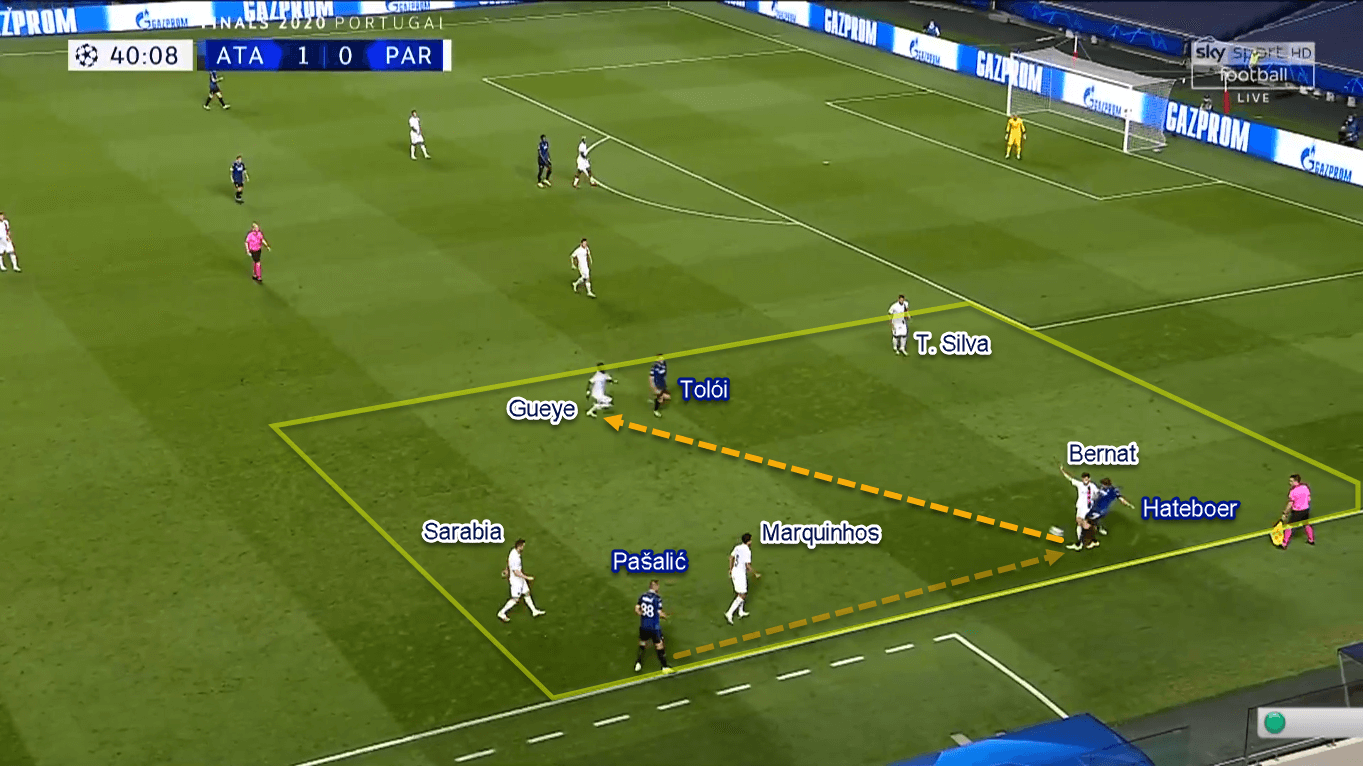
Pašalić’s goal as an anomaly
If Atalanta couldn’t attack through one flank, they would try to switch the play and quickly find their teammates in the opposite area. They did that by using their deeper players and circulate with short passes rather than using 60-yard diagonal balls. Atalanta would still do the flank-to-flank approach even when they had some advanced players in the central lanes.
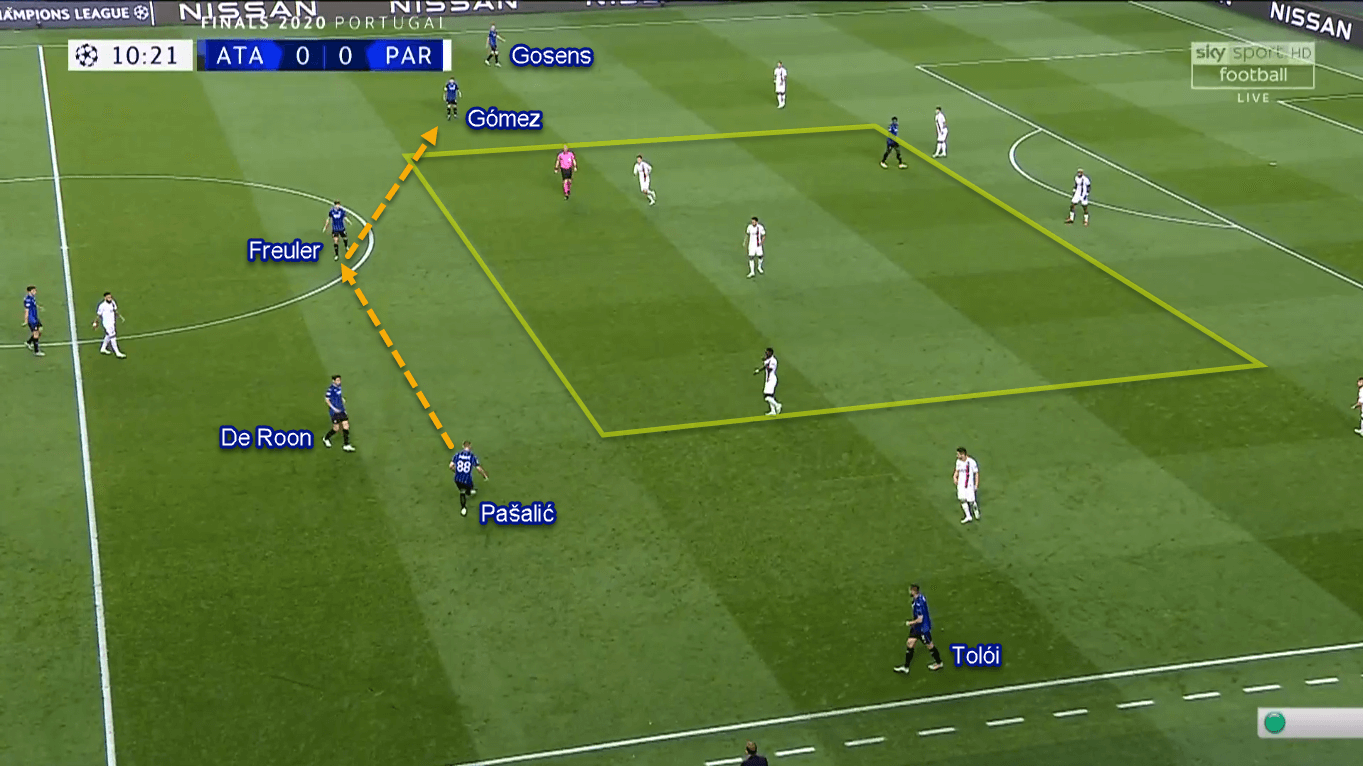
However, that was not the case in Pašalić’s goal. After times to times playing from one touchline to the other, Atalanta attacked centrally. After a right-sided combination failed, De Roon found marauding Tolói in the middle. The captain then opted to play vertically to Zapata in between the lines despite having Gómez to his left.
Zapata — who couldn’t control the ball perfectly — gave the ball away to incoming Freuler in the opposite half-space. The midfielder then returned the ball to Zapata, who once again didn’t have a sublime control on the ball. Kimpembe then stepped up to clear the ball. However, the clearance hit Zapata and somehow found Pašalić in the right half-space. The former Chelsea player then sweetly struck the ball home with his first touch.
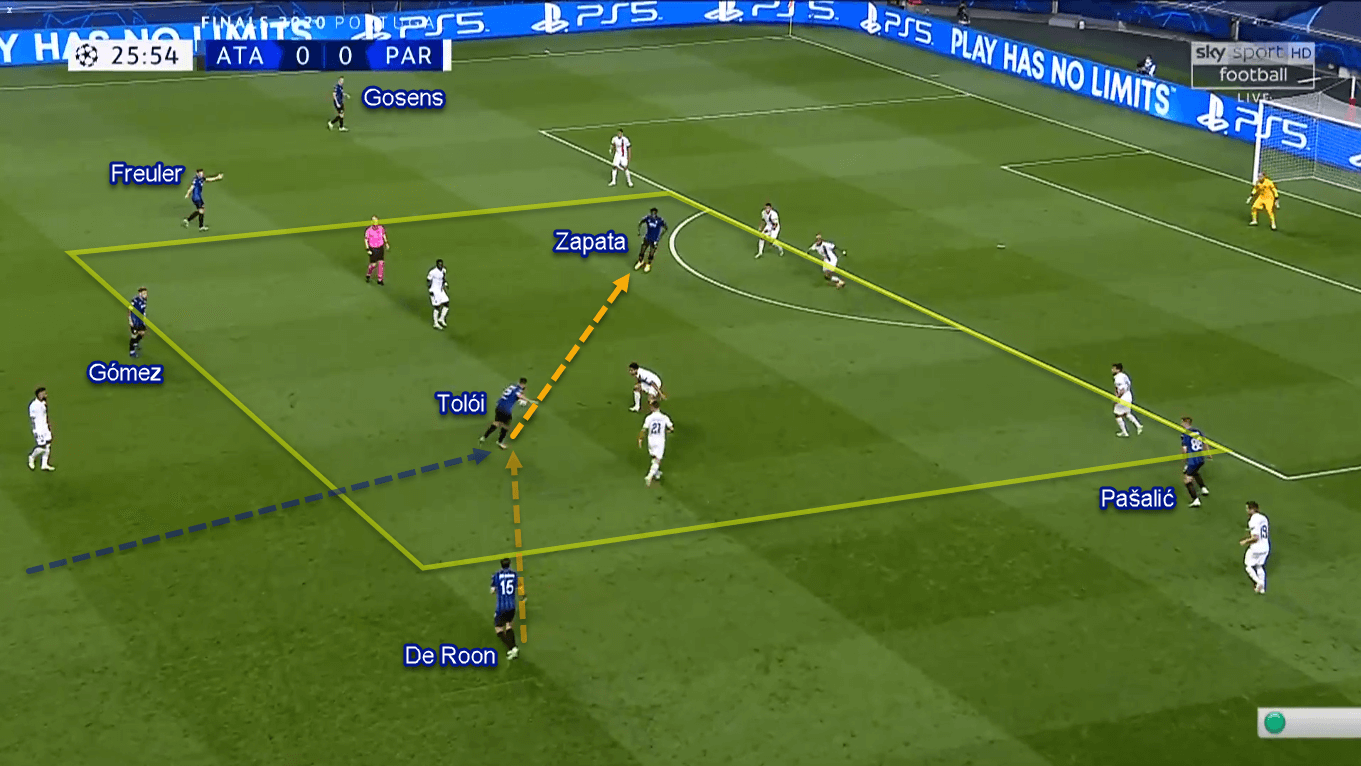
Conclusion
For some, this game was all about Neymar. He received the ball 67 times, had 15 successful dribbles, and contributed to 10 shot-creating actions throughout the game. However, he’s also the one who got the most relief after the game. The Brazilian had at least three golden chances in the first half — combined to about 1.0 expected goals (xG) — yet somehow missed all of them.
It’s more than the number 10, though. Credits must go to the managers as well. Both Gasperini and Tuchel displayed creativity and adaptability to counter each other’s tactics. Yet, Tuchel’s PSG prevailed after a series of naivety from the Italian side.
Bundesliga’s RB Leipzig are already waiting in the semifinal. This match is promising another interesting tactical battle between Tuchel, the mentor, against his protégé, Julian Nagelsmann. Can PSG prevail to achieve their European dream, or will Leipzig kill another giant next week?
It will be very interesting to see.





Comments